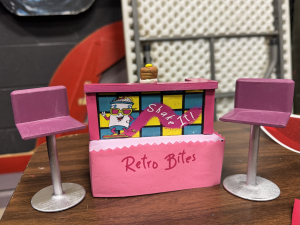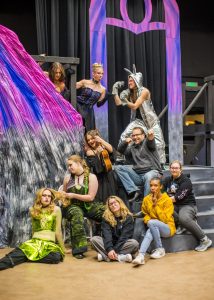Is social media hurting our ability to communicate?
October 1, 2016
This is my sixth and final semester at California University of Pennsylvania. This is my second university and third “school” (if a weekend program at a car detailing program counts as a “school”). That being said, I am not a traditional, 18-22 age student.
I notice that a number of my peers seem to prefer scrolling through social media feeds on his or her smartphones than talking to other students.
My second observation is related. When we do communicate, it is sometimes also about social media. “Did you see that Twitter post and Instagram photo,” is something I have heard a lot from our generation. This is not a bad thing, but we’ll discuss how this affects a person in a minute.
I am not the only one to think so, as a faculty member seemed to agree.
Rueben Brock, professor of psychology and popular on-campus speaker, said he has noticed a shift in student formality in the last 15 years.
Brock said there has been an overall change in the way people communicate. He said this can be rooted from accepted social norms and the way people communicate.
He also said there has been a decrease in formality, which he said is not bad for their culture, it can be bad for sending emails to a professor.
“I don’t get mad when students just start typing without starting out with a formal greeting, but I do correct them in my reply to the student,” he said.
While the recent lean towards informality is not solely contributing to the change, the communication style learned from the social media age is not helping formality.
“While young people will continue to retreat to their social media, they may will continue to be awkward when connecting with their peers,” Brock said.
The communication theorists seem to agree in a particular scientific experiment, as well.
According to the article “Impact of Social Media on Interpersonal Communication Patterns” by the University of Latvia, communication increased with peers, but appeared to decrease significantly with immediate family members.
Two other points were established by the study. One of these included a change in the definition of the word “friend” after social media was introduced.
Thirdly, the study found both positive and negative aspects of social media use in its scholarly conclusion. The positives included the sharing of ideas, an additional tool for communication (i.e., if someone checks email less often than social media), a marketing tool, and a source of information: such as for local events.
Negatives for it included a higher risk for privacy intrusion and the loss of family ties (as stated earlier).
Something else it concluded was that social media entities can be its own sort of community.
It is not only faculty who notice these things in our culture, but a fellow student wishes to connect face-to-face with students, as well.
Kevin Jenkins, junior English education major, passes trees that turn a beautiful shade of yellow in the fall. Known as the ginkgo biloba tree, it is an endangered species. Jenkins says there are two of these trees at California University of Pennsylvania’s campus.
Jenkins and I wonder how many thousands of students must have graduated from this university, without noticing these trees.
What is my friend’s point? Students do not take the time to notice life anymore.
“It seems strange to me that many students will regularly look at pictures or videos depicting the scope and brilliance of our natural world,” Jenkins said. “They fail to understand that the only reason they haven’t found anything worth appreciating in California is because they haven’t looked closely enough.”
The presence of social media certainly has had an effect on the lives of many at Cal. It has potential usefulness in the spreading of ideas, as outlined by a study later featured. However, the problem lies in the fact that we are so addicted to the gratification of online socialization that we run out of time for action.
Use social media to bring yourself closer to people who matter. Have you ever wondered what it’s like to sit with someone new, face-to-face and listen to what he or has to say? React to what they have said instead of waiting for your turn to speak. Allow their ideas to change your perception, then use your unique experiences to change theirs.
I challenge the reader to find someone, either in a club you are in or class you share or even someone who shares the same dorm as you, and meet him or her halfway. Want to share your ideas? Ask questions, listen to him or her, and have a real-life discussion. Who knows, the reader might even like it.





